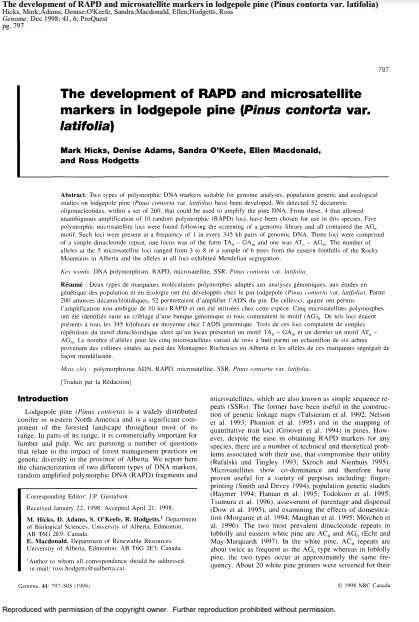The development of RAPD and microsatellite markers in lodgepole pine (Pinus contorta var. latifolia)
Bosque Modelo:
Foothills
Temática:
Conservación
Tipo de documento:
Artículo científico
Resumen
Two types of polymorphic DNA markers suitable for genome analyses, population genetic and ecological studies on lodgepole pine (Pinus contorta var. latifolia) have been developed. We detected 52 decameric oligonucleotides, within a set of 200, that could be used to amplify the pine DNA. From these, 4 that allowed unambiguous amplification of 10 random polymorphic (RAPD) loci, have been chosen for use in this species. Five polymorphic microsatellite loci were found following the screening of a genomic library and all contained the AGn motif. Such loci were present at a frequency of 1 in every 345 kb pairs of genomic DNA. Three loci were comprised of a simple dinucleotide repeat, one locus was of the form TAn - GAm and one was ATn - AGm. The number of alleles at the 5 microsatellite loci ranged from 3 to 8 in a sample of 6 trees from the eastern foothills of the Rocky Mountains in Alberta and the alleles at all loci exhibited Mendelian segregation
Información Bibliográfica
Autor:
Hicks, M, D Adams, S O’Keefe, E Macdonald and R Hodgetts.
Revista:
Genome
Año:
1998
N°:
-
País :
Canadá
Páginas:
797 - 805
Volumen:
41
Idioma:
Ingles
Palabras claves
DNA polymorphism, RAPD, microsatellite, SSR, Pinus contorta var. latifolia.





